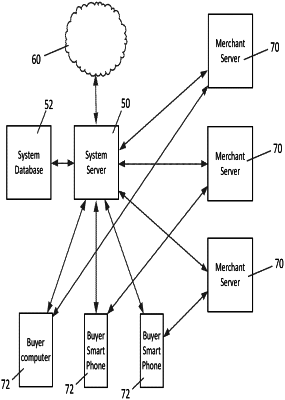| CPC H04L 63/0853 (2013.01) [G06F 21/35 (2013.01); H04L 63/08 (2013.01); H04L 63/10 (2013.01); H04L 67/10 (2013.01)] | 20 Claims |

|
1. A method for a passwordless login to an internet based system that includes a server, a database and a smart phone in communication with the server through a network, the method comprising:
receiving, at the server, a transmission from the smart phone including only a user name and a phone number for the smart phone associated with a user without any password;
recognizing, by the server, the user name and the phone number for the smart phone during a login of the user;
transmitting, by the server, a verification message that includes a unique randomly generated verification code that is part of a hyperlink for the passwordless login to the phone number of the smart phone;
providing, by the server, instructions for displaying a webpage for the hyperlink for internet based system on the smart phone of the user during the passwordless login;
receiving, by the server, a confirmation message transmitted through the hyperlink from the smart phone to authenticate the user during the passwordless login of the user;
binding, by the server, identification information for the smart phone to the user during the passwordless login of the user; and
authorizing, by the server, the user and the smart phone to interact with the server.
|